Looking for a pet bottle recycling plant project report? This guide covers everything you need, from startup costs and required machinery to collection processes and economic analysis. Whether you’re exploring the feasibility or seeking step-by-step procedures, this report has you covered.
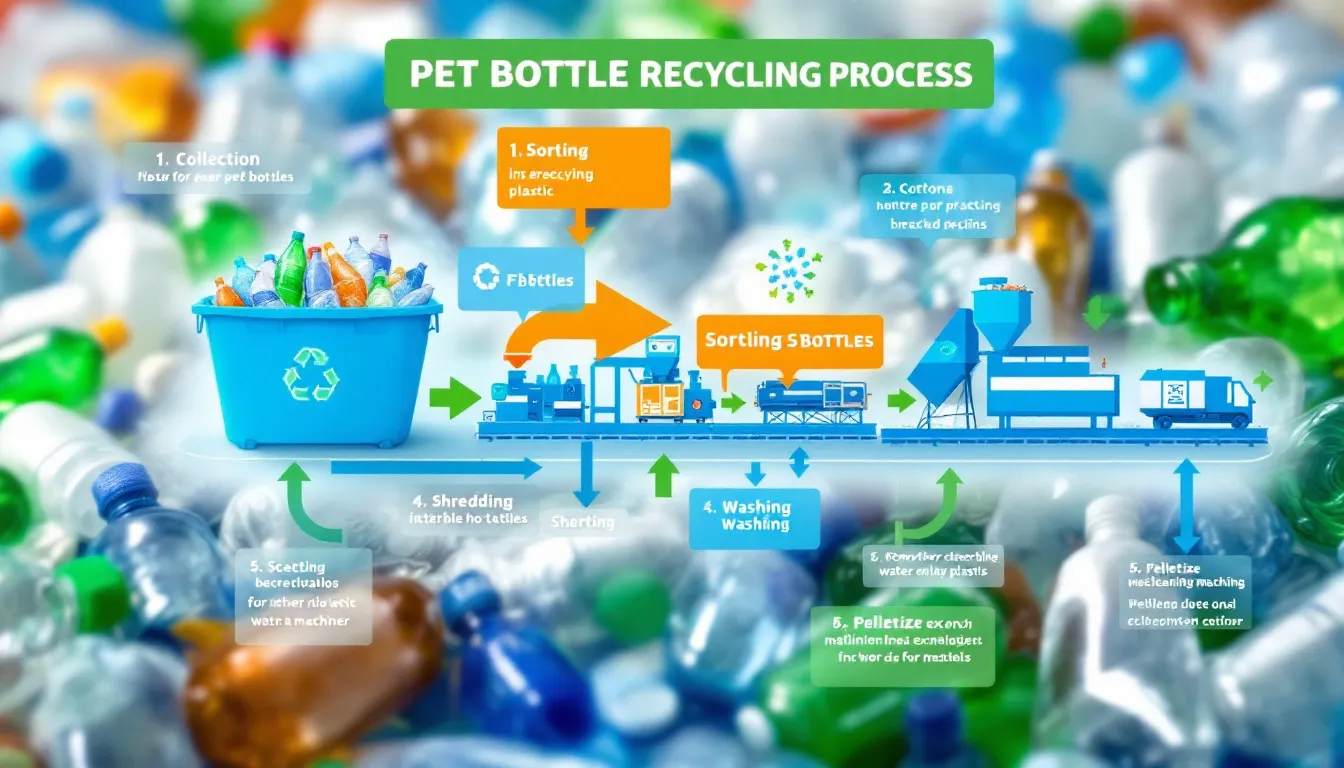
Plastic bottles, particularly those made from PET, create significant environmental problems, necessitating effective plastic recycling strategies. Recycling PET bottles contributes significantly to reducing environmental waste and conserving natural resources. This process not only provides environmental benefits but also offers economic advantages, encouraging sustainability. For example, a PET recycling plant from Previero-Sorema processes between 2,000 kg/h and 9,000 kg/h of washed and re-granulated PET flakes, showcasing significant production capacity. Additionally, the use of recycled plastic items, such as a plastic bottle, can further highlight the importance of recycling efforts to recycle plastic bottles.
Understanding the broader context of PET bottle recycling helps in appreciating the detailed processes involved. From collecting post-consumer PET bottles to transforming them into recycled PET flakes, the journey involves several critical steps. Each stage—from collection and sorting to advanced washing and drying—ensures the recycling process’s efficiency and effectiveness.
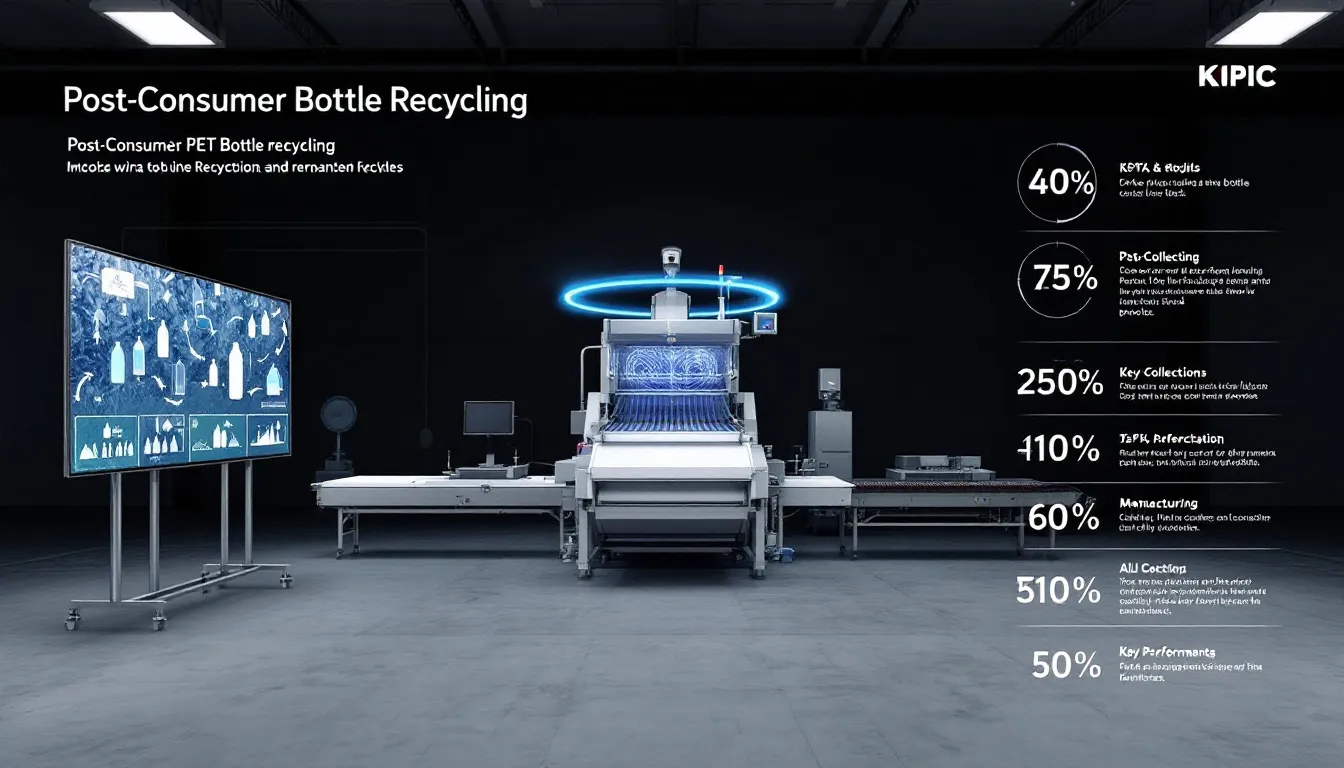
The journey of recycling PET bottles begins with the collection and sorting of post-consumer PET bottles. These bottles are often collected from designated recycling bins instead of general waste bins to improve recycling rates. Waste collectors gather PET bottles from various sources like railway stations, airports, restaurants, and hotels, ensuring a steady supply of raw materials for recycling. Establishing a reliable supply chain by building partnerships with local waste suppliers, municipalities, and companies that handle plastic waste is crucial for a successful recycling operation.
Once collected, the PET bottles undergo an initial rough sort at sorting facilities to separate them from other waste materials. Advanced sorting technology is essential for effectively handling lightweight and small PET bottles. Dewatering and compacting PET bottles significantly lower transportation costs and improve recycling efficiency. Compacted PET bottles take up less space, making them easier to handle and transport to recycling facilities.
Different types of bale breakers, including horizontal and vertical designs, cater to varying operational needs and ensure the efficient processing of collected PET bottles. Investing in advanced sorting technology and building strong supply chains optimizes the collection and sorting of post-consumer PET bottles, preparing them for the next recycling stages.
De-baling is a critical initial step in the PET recycling process that prepares bales of bottles for further processing. This involves severing the baling wire and utilizing machines to loosen the bales of bottles. Depending on the density of the bales being processed, the selection of bale breakers can vary. Both manual and automatic devices can be used for cutting the baling wire during the de-baling phase.
Preliminary cleaning follows de-baling, ensuring that the bottles are ready for the next stages of the recycling process.
The integrity of recycled PET heavily depends on the purity of the material, making the detection and removal of metal contaminants a crucial step. Conveyor metal detectors like ERGUARD DCM and SCM effectively identify metal contaminants in PET recycling, detecting inclusions as small as 1 mm. For free-fall detection, gravity metal detectors such as ERGUARD GM are used and can reject metal particles starting from 0.8 mm in size.
Eddy current technology is recommended for separating non-ferrous metals, ensuring the purity of the recycled PET. Effective metal detection and removal enhance the quality of recycled PET, ensuring it meets industry standards. This step is essential not only for maintaining equipment integrity but also for producing high-quality secondary raw materials.
One of the significant challenges in PET bottle recycling is the removal of labels and impurities. PVC labels, in particular, represent a substantial challenge. To address this, a label-scrapping machine with a blower is used to effectively remove labels from PET bottles. This step is crucial to ensure that the PET material is free from contaminants that could affect the quality of the recycled product.
The hot washing process for PET flakes involves soaking, heating the cleaning medium, and dosing detergent to ensure thorough cleaning. This process helps in the removal of residual impurities and oils from the PET flakes, preparing them for further processing. Effective separation of labels and impurities greatly enhances the quality of recycled PET.
Advanced washing and drying processes play a pivotal role in the PET bottle recycling process. The hot washing process involves soaking and heating the cleaning medium, along with adding detergents to enhance impurity removal. Both temperatures and detergent concentrations are carefully controlled to achieve optimal cleaning. Mechanical action during hot washing significantly boosts the effectiveness of removing labels and residual impurities from flakes.
The rinsing stage employs various types of machines, including high-speed rinsing tanks and ultrasonic washing machines, to clean PET flakes by using water vortex force and cavitation. This stage ensures that the PET flakes are thoroughly cleaned and ready for further processing. Moisture extraction is crucial in the extrusion process to prevent hydrolysis, which can degrade PET’s molecular structure.
A specific machine known as a label-scrapping unit equipped with a blower effectively removes heat-shrinkable labels, ensuring that the PET flakes are free from label residues. By implementing these advanced washing and drying processes, the quality and purity of the recycled PET are significantly enhanced.
The extrusion process is crucial in the recycling of PET as it transforms cleaned PET flakes into a usable form for manufacturing. During the extrusion phase, PET flakes are melted, homogenized, and filtered to remove contaminants before being shaped into pellets. The MRS (Multi Rotation System) extruder enhances the degassing process, allowing for effective moisture removal without pre-drying the PET material.
The Gneuss filtration system used in extrusion can achieve fine filtration with minimal melt loss, ensuring high product quality. The outcome of the extrusion process is the formation of pellets from the melted PET material, ready for further manufacturing. These pellets can be utilized in various applications, including fibers, sheets, and injection molding for new bottles.
Quality control and testing are essential to ensure that the recycled PET products meet industry standards. Implementing metal detection technologies helps maintain equipment integrity and ensures the quality of secondary raw materials in PET recycling. Both automated and manual inspection methods are used in quality control to leverage the strengths of each approach, ensuring thorough product evaluations.
Innovative technologies, such as automated testing systems, have significantly improved accuracy in quality inspections, achieving detection rates up to 95%. Common quality metrics in the PET bottle industry include wall thickness, impact resistance, and compression resistance, ensuring products meet safety standards. Regulating melt temperature and viscosity during extrusion maintains consistent polymer properties and product quality.
1. Essential Machinery: Setting up a PET bottle recycling plant requires specific machinery and equipment. Key machinery includes shredders for breaking down plastic bottles, washers for cleaning, extruders for melting and reshaping, and pelletizers for forming pellets. Each piece of equipment plays a vital role in the recycling process, ensuring the transformation of waste into valuable recycled PET products.
2. Cost Variability: The cost of machinery can vary significantly depending on the scale of production and the technology used. High-end technology may offer better efficiency and product quality but comes at a higher initial investment. It’s crucial to evaluate the production needs and select machinery that balances cost with performance.
3. Supplier Options: Suppliers of recycling equipment, particularly in regions like India, offer various options to cater to different operational needs. It’s important to research and choose suppliers who provide reliable machinery and offer after-sales support to ensure smooth operations.
4. Budgeting and Financial Planning: Estimating the cost of machinery is vital for budgeting and financial planning. This estimation helps in securing necessary funding and ensures that the project remains financially viable. It’s advisable to account for both initial purchase costs and long-term maintenance expenses.
5. Quality and Efficiency: High-quality equipment guarantees efficient processing and superior recycled PET products. Investing in well-built machinery can lead to long-term savings by reducing downtime and maintenance costs. Quality machinery also enhances the overall productivity of the recycling plant.
6. Operational Optimization: By selecting the right machinery and equipment, recycling plants can optimize their operations and achieve better productivity. Proper equipment selection and layout design can streamline processes, reduce waste, and improve the overall efficiency of the recycling operation.
PET Waste: The primary raw material for PET recycling is PET waste, which is collected from various sources such as rag pickers, scrap dealers, and industries. This waste forms the foundation of the recycling process and is crucial for producing high-quality recycled PET products.
Cleaning Agents and Chemicals: Essential in the recycling process, these agents ensure the thorough cleaning of PET flakes. They help in removing impurities, labels, and residues, which are critical for maintaining the purity and quality of the recycled material.
Machinery and Energy Requirements: Machinery plays a significant role in the overall production process. Essential machinery includes shredders, washers, extruders, and pelletizers. Energy requirements are also substantial, as the recycling process involves various energy-intensive stages such as heating and extrusion.
Reliable Raw Material Sources: Establishing a reliable source of raw materials is critical for the continuous operation of a recycling plant. Partnering with local waste suppliers, industries, and municipalities helps secure a steady supply of PET waste, ensuring an efficient recycling process.
Supply Chain Partnerships: Building strong partnerships with local waste suppliers, municipalities, and companies that handle plastic waste is vital. These partnerships ensure a consistent supply of raw materials and contribute to a smooth and efficient recycling process, leading to the production of high-quality recycled PET products.
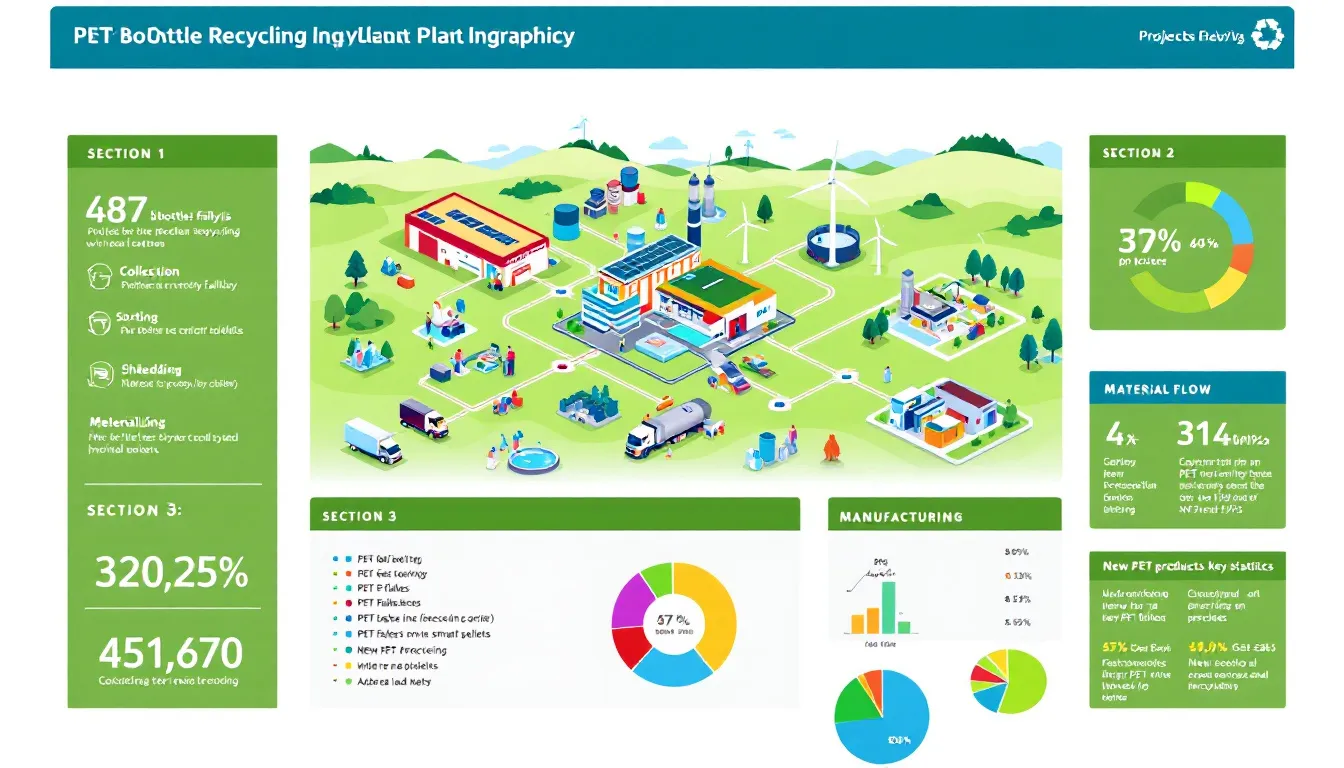
Understanding the economic aspects of setting up and operating a PET bottle recycling plant is crucial for potential investors. Labor expenses generally account for 20-30% of the operational budget, with average annual wages for manufacturing workers between $40,000 and $60,000. Utilities costs, which include electricity and water, can vary from $10,000 to $50,000 per year, depending on the facility size and output.
Regular maintenance of machinery is critical, with maintenance costs typically representing 5-10% of total operational expenses. Packaging expenses can add another 10-15% to the overall costs of running a recycling plant. Transportation and logistics may contribute between 5-10% of operating costs, often amounting to $20,000 to $100,000 annually.
Other expenses include waste management fees, which typically average around $10,000 to $30,000 per year, and insurance premiums, which may cost between $5,000 to $20,000 annually. A thorough economic analysis is critical for understanding the costs involved in setting up and operating a PET bottle recycling plant.
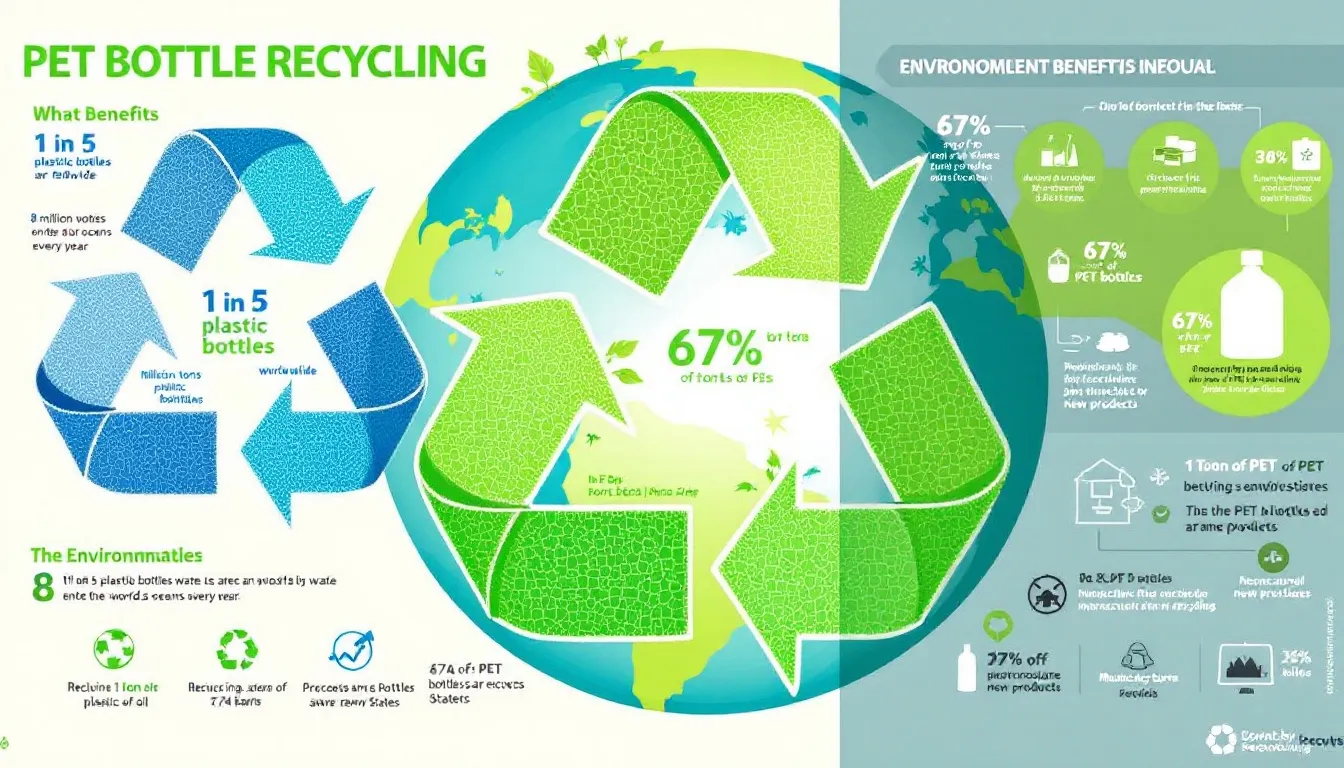
Reduction in Landfill Waste: Recycling PET bottles significantly reduces the volume of waste sent to landfills. By diverting plastic bottles from landfills, we decrease the environmental burden and extend the lifespan of existing landfill sites.
Protection of Natural Environments: This process helps reduce plastic waste in oceans and other natural habitats. By recycling, we minimize the risk of plastic pollution harming marine life and ecosystems.
Conservation of Non-Renewable Resources: Recycling PET helps preserve non-renewable resources like oil and gas that are used in the production of new plastic materials. This conservation is crucial for sustainable resource management.
Lower Carbon Emissions: Using recycled PET in manufacturing helps lower carbon emissions and decreases reliance on virgin PET plastics. This reduction in emissions contributes to the fight against climate change.
Energy Conservation: The energy conservation from recycling PET bottles leads to a significant decrease in greenhouse gas emissions. Recycling uses less energy compared to producing new plastic from raw materials.
Promotion of Sustainability: The practice of recycling PET bottles is a key aspect of promoting a sustainable future. The increasing consumer focus on sustainability is pushing companies to adopt recycled materials in their products, driving eco-friendly innovations.
Market Growth: The global recycled PET (rPET) market is projected to grow at a compound annual growth rate (CAGR) of 8.9% from 2024 to 2031. In the Asia Pacific region, the rPET market is expected to capture 68.9% of the global market share by 2024, highlighting significant regional growth.
Consumer Awareness: Growing consumer awareness about environmental impacts is driving brands to prioritize sustainable packaging solutions, including recycled PET bottles.
Versatile Applications: Recycled PET can be transformed into various products such as textiles, packaging, and insulation materials. PET pellets produced through the extrusion process are used in different applications, including fibers, sheets, and injection molding for new bottles.
Packaging Sector Dominance: The packaging sector holds the largest share of the rPET market, projected to reach $8.5 billion by 2031 due to the increasing demand for eco-friendly packaging, including recycled polyethylene terephthalate.
Textile Industry Growth: The textiles segment is expected to see significant growth in the rPET market, with a CAGR of 9.3%, reflecting the fashion industry’s shift towards sustainable materials.
Diverse Product Range: Recycled PET is used in various products, including new water bottles, polyester carpet fiber, t-shirts, upholstery, industrial strapping, and fiberfill for sleeping bags.
Market Research Importance: Conducting in-depth market research is crucial for understanding the demand for recycled PET products and identifying potential customers in manufacturing sectors.
1. Impurity Challenges: PET bottle recycling faces significant challenges due to impurities present in the recycling stream. These impurities, such as dirt and labels, can compromise the quality of the recycled PET material.
2. Mixed-Material Structures: Another challenge is the presence of mixed-material bottle structures. Bottles often contain different materials, such as caps and labels, which complicate the recycling process and can lead to quality issues.
3. Colored PET Bottles: Recycling colored PET bottles is challenging because the dyes used can contaminate recycling streams and lower the quality of the recycled product. This affects the purity and usability of the recycled PET.
4. Lightweight PET Bottles: While environmentally friendly, lightweight PET bottles often degrade during recycling, resulting in a reduced quality of the recycled product. This poses a challenge in maintaining the structural integrity of the recycled material.
5. Innovative Solutions: To address these challenges, innovative solutions are being implemented. Encouraging the use of recyclable materials for bottle components helps streamline the recycling process and improve the quality of recycled PET.
6. Advanced Management Systems: Companies like Previero-Sorema employ comprehensive supervisor systems (SCADA) to manage all aspects of the PET recycling process. This enhances operational efficiency and allows for remote monitoring, improving overall recycling outcomes.
7. Industry Collaboration: Collaboration among industry players, governments, and recycling organizations is crucial for advancing sustainable practices in PET bottle management. Joint efforts can lead to improved recycling techniques and increased recycling rates.
By addressing these challenges with innovative solutions and collaborative efforts, the PET bottle recycling industry can enhance its efficiency and sustainability, leading to higher-quality recycled PET products.
Regulatory Pressures: Government policies and corporate sustainability initiatives are crucial drivers for the growth of the rPET market. Regulatory pressures are increasing, pushing manufacturers towards developing eco-friendly alternatives and enhancing recycling processes.
Product Labeling: Under PWM (Plastic Waste Management) rules, recycling products must bear a label indicating they are made from recycled materials, adhering to specific standards like IS 14534: 1998. This labeling ensures transparency and encourages the usage of recycled materials.
Guidelines by BIS: The Bureau of Indian Standards (BIS) provides guidelines for the recycling process and mandates identification marks on products made from recycled PET. These guidelines help maintain quality standards and ensure the safety of recycled products.
Import Ban on Plastic Waste: In 2016, India banned the importation of plastic waste, including PET, to encourage local recycling and reduce landfill contributions. This policy aims to bolster the domestic recycling industry and minimize environmental impact.
Amendments to PWM Rules: The PWM rules have been amended to improve compliance and handling methods for plastic waste. These amendments reflect the need for comprehensive regulations to manage plastic waste effectively and promote recycling initiatives.
Encouragement of Local Recycling: By implementing these policies, the government encourages local recycling efforts, reducing reliance on imported materials and fostering a circular economy.
These government policies and regulations play a vital role in shaping the PET bottle recycling industry, driving it towards more sustainable and efficient practices.
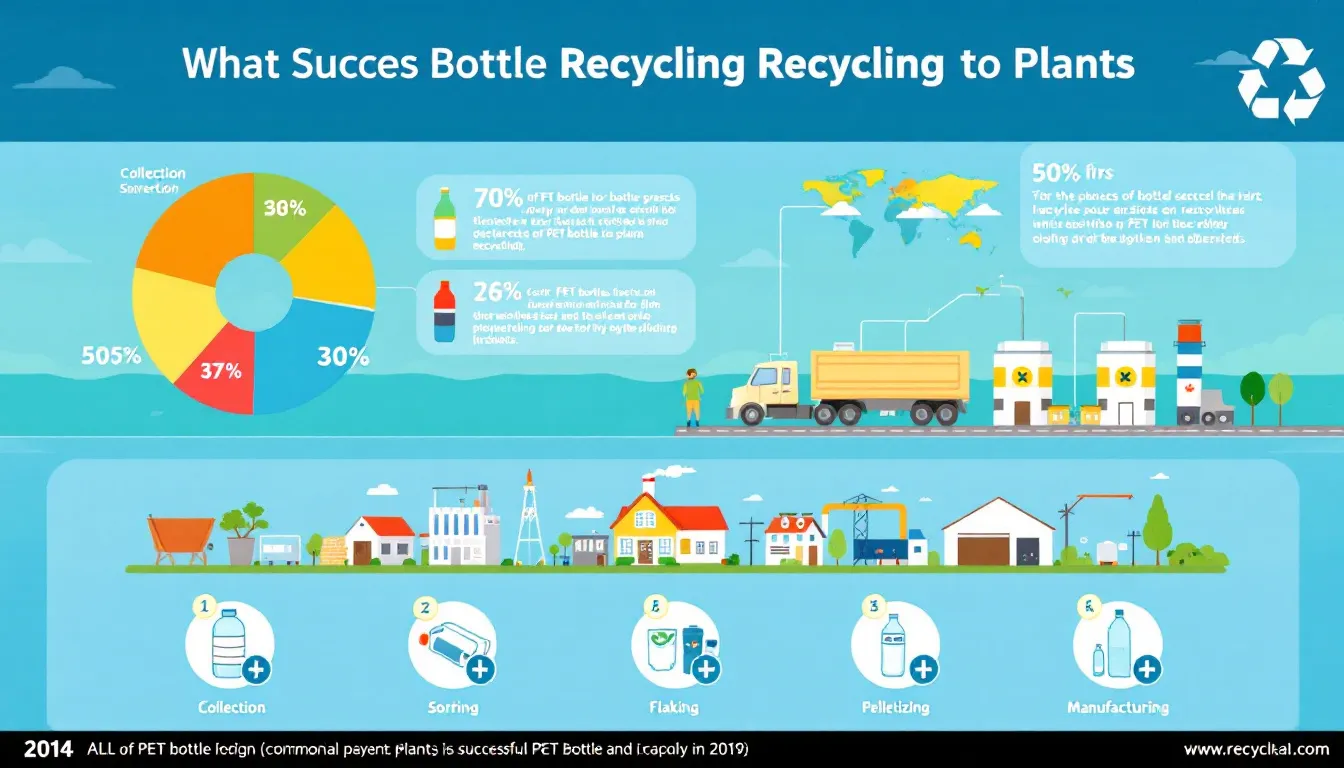
Learning from successful PET bottle recycling plants allows new operators to adopt proven strategies and improve operational efficiency. These plants implement rigorous quality control measures, ensuring high standards in their recycled PET products. Some leading PET bottle recycling plants utilize advanced technology that automates the sorting and processing stages, enhancing overall productivity.
The collective insights from these successful case studies significantly push the recycling industry towards greater efficiency and sustainability. Examining these case studies allows new recycling plant operators to gain valuable knowledge and implement best practices.
Starting your own PET bottle recycling plant involves several critical steps. Here’s a detailed point-wise guide to help you get started:
1. Business Registration and Legal Compliance: Begin by registering your recycling business with the appropriate legal structure, such as a sole proprietorship, partnership, or corporation. Obtain necessary tax registrations and local permits. Ensure compliance with environmental regulations by acquiring the necessary licenses from local pollution control authorities.
2. Strategic Location Selection: Choose a strategic location for your plant that is close to sources of raw materials, such as waste collection centers, and is easily accessible to your target market. Proximity to raw material sources reduces transportation costs and ensures a steady supply of PET waste.
3. Acquisition of Essential Machinery: Acquire essential machinery tailored to the types of plastics you will process. This includes shredders for breaking down plastic bottles, granulators for size reduction, washing systems for cleaning, and extruders for reshaping the plastic into pellets or other forms. The choice of machinery should align with your production scale and technological requirements.
4. Cost Estimation and Financial Planning: Setting up a PET bottle recycling plant typically involves costs ranging between $500,000 and $2 million. These costs are influenced by the scale of production, technology employed, and quality of machinery. Conduct thorough financial planning to secure necessary funding and ensure the project’s financial viability.
5. Marketing Strategy Development: Develop a comprehensive marketing strategy to promote your recycled materials. This strategy should include online promotions, participation in trade shows, and direct sales efforts to connect with potential buyers. Highlight the environmental benefits and cost savings of using recycled PET in your marketing messages.
By following these detailed steps, you can successfully establish and operate a PET bottle recycling plant, contributing to environmental sustainability and tapping into lucrative market opportunities.
1. Technological Advancements: The future of PET bottle recycling is promising with advancements in recycling technologies. Innovations like chemical recycling are set to enhance the reusability of PET by breaking it down into base components, paving the way for a more efficient recycling process.
2. Remote Commissioning: Companies like Previero-Sorema have successfully implemented remote commissioning for PET bottle recycling plants. This technology allows for efficient startup processes despite travel restrictions, using remote assistance and video conferencing, which may become standard practice for future projects.
3. Innovative Bottle Designs: Future trends also include innovations in bottle design, such as lightweighting. This aims to reduce material usage while maintaining the structural integrity of bottles, contributing to sustainability.
4. Sustainable Practices: The combination of advanced recycling technologies and innovative bottle designs signifies a positive shift towards sustainable PET bottle recycling practices, ensuring a greener future for the recycling industry.
In conclusion, PET bottle recycling is a vital process that offers significant environmental and economic benefits. From the initial collection and sorting of post-consumer PET bottles to advanced washing, extrusion, and quality control, each step plays a crucial role in producing high-quality recycled PET products. By addressing challenges, leveraging market opportunities, and adhering to government regulations, the PET bottle recycling industry can continue to grow and contribute to a sustainable future.
The recycling process of PET bottles involves several key steps: collection and sorting, de-baling and preliminary cleaning, metal detection and removal, label and impurity separation, advanced washing and drying, extrusion and pelletizing, followed by quality control and testing. Each step is crucial to ensure the successful recycling of PET materials.
Recycling PET bottles significantly benefits the environment by reducing landfill waste and plastic pollution, conserving non-renewable resources, and lowering carbon emissions. This practice promotes energy conservation and supports a more sustainable ecosystem.
Establishing a PET bottle recycling plant requires careful attention to labor costs, utilities, maintenance, packaging, transportation, waste management fees, and insurance premiums. Each of these factors significantly impacts the overall financial viability of the operation.
The challenges in PET bottle recycling, such as impurities and mixed-material structures, can be effectively addressed through the use of recyclable materials, advanced technologies, and collaboration among stakeholders. Implementing these solutions will enhance recycling efficiency and sustainability.
Advancements in recycling technologies, such as chemical recycling and innovative bottle designs, are anticipated to shape the future of the PET bottle recycling industry, focusing on improving efficiency and reducing material usage without compromising quality. These innovations will play a crucial role in enhancing sustainability efforts in the industry.
Investing in our comprehensive PET bottle recycling plant project report offers you a strategic advantage in entering the recycling industry. Here’s why you should consider purchasing our report:
1. Detailed Insights: Our report provides an in-depth analysis of every aspect of the PET bottle recycling process, from collection and sorting to advanced washing and extrusion. This ensures you have a clear understanding of each step involved in setting up and operating a successful recycling plant.
2. Economic Analysis: We offer a thorough economic analysis, including cost estimation, budgeting, and financial planning. This section helps you understand the financial commitments required and aids in securing necessary funding for your project.
3. Latest Trends and Innovations: Stay ahead of the competition by learning about the latest trends and technological advancements in the PET recycling industry. Our report highlights innovative solutions and future trends that can enhance your plant’s efficiency and sustainability.
4. Regulatory Guidance: Navigate the complex landscape of government policies and regulations with ease. Our report includes detailed information on compliance with environmental regulations, labeling standards, and import policies, ensuring your operations adhere to legal requirements.
5. Market Opportunities: Discover lucrative market opportunities for recycled PET products. Our report provides insights into market growth, consumer awareness, and potential applications for recycled materials, helping you tap into new revenue streams.
6. Case Studies and Best Practices: Learn from successful PET bottle recycling plants through case studies that showcase proven strategies and best practices. These insights can significantly improve your operational efficiency and product quality.
7. Comprehensive Resource: Our project report serves as a one-stop resource for all your PET bottle recycling needs, offering valuable information that saves you time and effort in research and planning.
By purchasing our project report, you gain access to expert knowledge and strategic insights that can significantly enhance your chances of success in the PET bottle recycling industry. Make an informed decision and embark on your recycling journey with confidence.